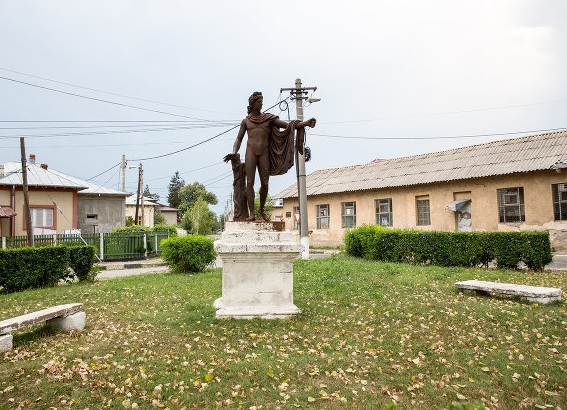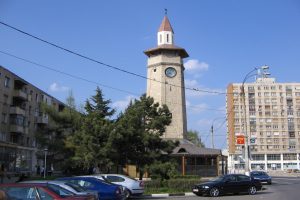

The statue of Apollo Belvedere is one of the acknowledged historical monuments at the level of the county of Giurgiu. It was built in the XIXth century.
Apollo from Belvedere is a famous antique sculpture made of marble. It was rediscovered in the XIXth century in Terracina. Currently, it is situated in the court of Belvedere from Vatican and it is part of the collection of antiques of the Vatican Museums.
The marble statue is a Roman copy of a bronze statue which was created between 350 – 325 b.Chr. by the Greek sculptor Leocares. The right forearm and the left hand were missing in the moment of the discovery, they being re-built by Giovanni Angelo Montorsoli, sculpter and collaborator of Michelangelo.
The oldest records of a human establishment in the area of Giurgiu date back to the Mesolithic (the millennium 10 – 7 b. Chr.). As the archeological research certify, the area of Giurgiu was densely populated in the Dacian period (the Ist century b.Chr.). It has been circulated the fact that until present, the hypothesis according to which the city of Giurgiu would have been founded by the Genovese and named after the titular saint of Genoa (San Giorgio). This belief which appeared in the XIXth century, although widely circulated, it was later on rejected by the specialists and it no longer constitutes today an available working hypothesis. The first certain mention of the citadel of Giurgiu is in the document Codex Latinus Parisinus from the beginning of the XVth century, under the name of Zorio.
The adjacent mention: “wilderness place” suggests the destruction of the citadel in the times of the Ottoman campaign of 1394 against Mircea I of Wallachia.
In 1420 it was conquered by the Ottoman Empire who wanted thereby to hold the control of the traffic on the Danube. The Ottomans named Giurgiu “Yergöğü”, it becoming the residence of a Rayah formed from its immediate hinterland.
Being a fortified city, Giurgiu, played an important role in the frequent wars between the Romanians and the Turks for the control of the Danube, especially in the anti-Ottoman campaign of Michael the Brave, and later on in the Russian – Turkish wars.
Enlarged in 1560, the citadel became an authentic bridge head for the sultans, over the Danube.
For almost 150 years, the citadel no longer suffered sieges. Gradually, the citadel from the island loses its importance. The last time when it was used as a defense bastion during the Russian – Ottoman fights (1768 – 1774). Although it was conquered by the Russians, the citadel comes back to the Turks, which fortify the city, becoming a munitions storehouse. In all the Russian – Austrian – Ottoman wars which followed, the citadel was besieged.
Giurgiu was given back to Wallachia in 1829, on that date the walls ad the fortifications being completely destroyed by the Turks before they retreated, therefore, the only defense which they had left was the castle situated on the island of Slobozia, connected to the shore by a bridge.
At the end of the XIXth century, Giurgiu had the statute of urban commune, the residence of the county of Vlașca, having a population of 11.890 inhabitants, in proportion of three quarters being Romanians. In 1950, Giurgiu received the statute of regional city in the region of Bucharest, becoming also the residence of the district of Giurgiu, subordinated to this region.
Between 1952 – 1954, the communist regime, supported by the URSS, built the Bridge Giurgiu – Ruse (or the Bridge of Friendship), the first bridge over the Danube which connected Romania with Bulgaria. In 1968, the city was declared municipality, but losing its role of administrative center, being assigned to the county of Ilfov. It became again county residence together with the founding of the county of Giurgiu in 1981, following a regional administrative reorganization.


